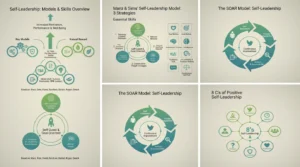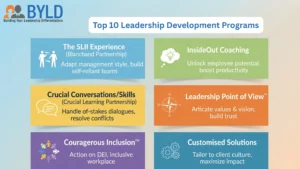
Tailored L&D Training: Maximizing Employee Potential in Your Organization
- Our Subject Matter Experts
- January 23, 2024
- 10:00 am
- No Comments

Article Content
Overview
In today’s evolving business landscape, organizations are recognizing the critical importance of investing in their most valuable asset: their employees. Learning and Development (L&D) programs have emerged as a key strategy for nurturing employee potential, and one approach that’s gaining significant traction is tailored L&D training.
Understanding Tailored L&D Training
Tailored L&D training, also known as customized or bespoke training, involves designing learning programs that are specifically crafted to meet an organization’s unique needs and goals. It’s a departure from one-size-fits-all training approaches and focuses on delivering content, methods, and resources that align precisely with an organization’s objectives.
Why Tailored L&D Training Matters
1. Relevance: One of the standout benefits of tailored L&D training is its relevance. Generic training programs may not address the specific challenges and opportunities that your organization faces. Tailored training ensures that every aspect of the program is pertinent to your industry, your company, and your employees.
2. Engagement: When employees feel that the training is designed with their roles in mind, they’re more likely to engage with the material. Tailored training can incorporate real-world scenarios, case studies, and examples that resonate with your team, making the learning experience more engaging and practical.
3. Skill Development: Customized L&D allows you to pinpoint the skills and competencies that your employees need to develop. Whether it’s leadership, technical proficiency, or soft skills like communication, tailored programs can zero in on the areas that matter most.
4. Efficiency: Tailored L&D programs can be more time-efficient. Since the content is directly relevant to your organization, there’s less need for employees to sift through extraneous information. This efficiency can lead to quicker skill acquisition and improved productivity.
5. Adaptability: The business landscape is dynamic, and so are your organization’s needs. Tailored training can be adjusted and updated as your organization evolves, ensuring that your employees are always equipped with the latest knowledge and skills.
The Process of Tailored L&D Training
1. Assessment: The process begins with a thorough assessment of your organization’s needs and objectives. What are your goals? What skills are lacking? What challenges are you facing? This assessment forms the foundation for the tailored program.
2. Design: With a clear understanding of your needs, the training program is designed. This involves creating content, selecting delivery methods (e.g., workshops, e-learning, coaching), and crafting assessments to gauge progress.
3. Delivery: The training is delivered to your employees. This can be done through in-house trainers, external experts, or a combination of both, depending on the complexity of the program.
4. Evaluation: After the training, it’s essential to evaluate its effectiveness. Are employees applying what they’ve learned? Are there tangible improvements in skills and performance? This evaluation phase helps refine future training initiatives.
Maximizing Employee Potential
Tailored L&D training isn’t just about checking a box; it’s about unlocking the full potential of your employees. By aligning training with your organization’s unique needs, you’re not only investing in skill development but also in the growth and success of your entire company.
In a world where adaptability and continuous learning are paramount, tailored L&D training is a strategic move that can set your organization apart. It’s a commitment to your employees’ growth and a powerful tool for maximizing their potential. So, consider this approach and watch as your organization’s capabilities soar to new heights.






